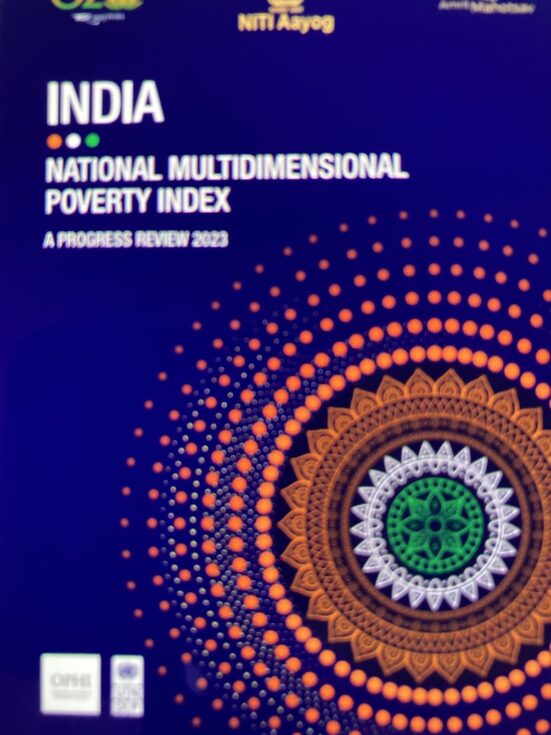
A-data-boost-to-modi-govts-poverty-alleviation-programme-niti-aayog-report |
EXECUTIVE SUMMARY
Overview
Home to one-sixth of humanity and to more young minds than any other country, India plays a decisive
role in Agenda 2030. At the core of India’s development agenda is the elimination of poverty in all
its forms, ensuring that no individual is left behind.
Historically, poverty estimation has predominantly relied on income as the sole indicator. However, the
Global Multidimensional Poverty Index (MPI), based on the Alkire-Foster (AF) methodology, captures
overlapping deprivations in health, education, and living standards. It complements income poverty
measurements because it measures and compares deprivations directly. The global MPI Report is jointly
published by the Oxford Poverty and Human Development Initiative (OPHI) and the United Nations Development Programme (UNDP). Government of India has acknowledged the
significance of the global MPI under the mandate of the Global Indices for Reform and Action (GIRG) initiative. The emphasis of the GIRG initiative is not only to improve the country’s performance and ranking
in the global indices, but also to leverage the indices as tools for driving systemic reforms and growth.
In this context, NITI Aayog, as the nodal agency for MPI, has been responsible for constructing an
indigenized index for monitoring the performance of States and Union Territories in addressing
multidimensional poverty. In order to institutionalize xii NATIONAL
MULTIDIMENSIONAL POVERTY INDEX
A Progress Review 2023
this, NITI Aayog constituted an inter-ministerial MPI Coordination Committee (MPICC) including Ministries and departments pertaining to areas such as health,
education, nutrition, rural development, drinking water,
sanitation, electricity, and urban development, among others. It also included experts from the Ministry of
Statistics and Programme Implementation (MoSPI)
and technical partners – OPHI and UNDP. The composition of the MPICC drew from the multidimensional nature of the indicators and
sub-indicators within the index. This brought forth cross-sectoral perspectives on policies and
interventions needed to improve achievements at the level of households.
As a result of extensive consultations held within MPICC, the dual-cutoff approach of the AF methodology – the one used in the Global MPI Report
– was considered suitable for the national MPI. The national MPI model retains the ten indicators of the
global MPI model, staying closely aligned to the global
methodology. It also adds two indicators, viz., Maternal
Health and Bank Accounts in line with national priorities.
Like the global MPI, India’s national MPI has three equally weighted dimensions – Health, Education, and
Standard of living – which are represented by 12 indicators. These are depicted by the following..


